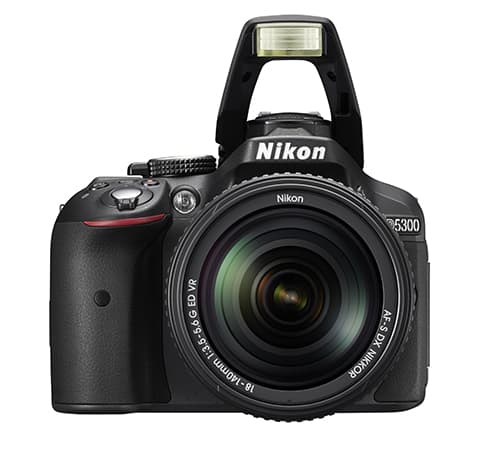Pitched above the D5200 (which will continue in the range), the D5300 uses a 39-point AF system with nine cross-type sensors in the centre.
The D5300 will cost around £730, body-only, and is due on sale on 14 November.
To help improve reproduction of subject detail, the camera’s imaging sensor does not have an optical low-pass filter – a move Nikon hopes will make the camera appeal to a broad range of photographers, not just its target audience – DSLR newcomers.
The D5300 is made of a ‘monocoque’ [single shell] structure that does
away with a ‘conventional chassis’, said Nikon UK’s senior product
manager Simon Iddon, speaking at the camera’s London press launch.
When
asked what material has been used to make the camera body, Iddon
would only say that it consists of a ‘special new material’.
The D5300 is billed as the first DX-format DSLR to feature built-in Wi-Fi and GPS.
It incorporates an Expeed 4 image processor and ISO of 12,800, extendable up to 25,600.
Features also include a maximum claimed burst rate of five frames per second, and a 1,037k-dot, 3.2in, 170°-angle LCD screen (with brightness adjustment).
The retouch menu now incorporates a new D-Lighting option for portrait work, while newly added creative effects include toy camera and an HDR painting option.
The D5300 comes with a new, more energy efficient, battery – claimed to deliver 600 shots per charge (compared to 500 on the D5200).
Earlier this month, AP reported that UK consumers have shifted their purchases towards lower specification, entry-level, models, according to market research firm GfK.
- Also announced today is a new Nikon 58mm f/1.4G AF-S prime lens for FX-format DSLRs (pictured below). It will cost £1,599.99 and is due on sale on 31 October.








